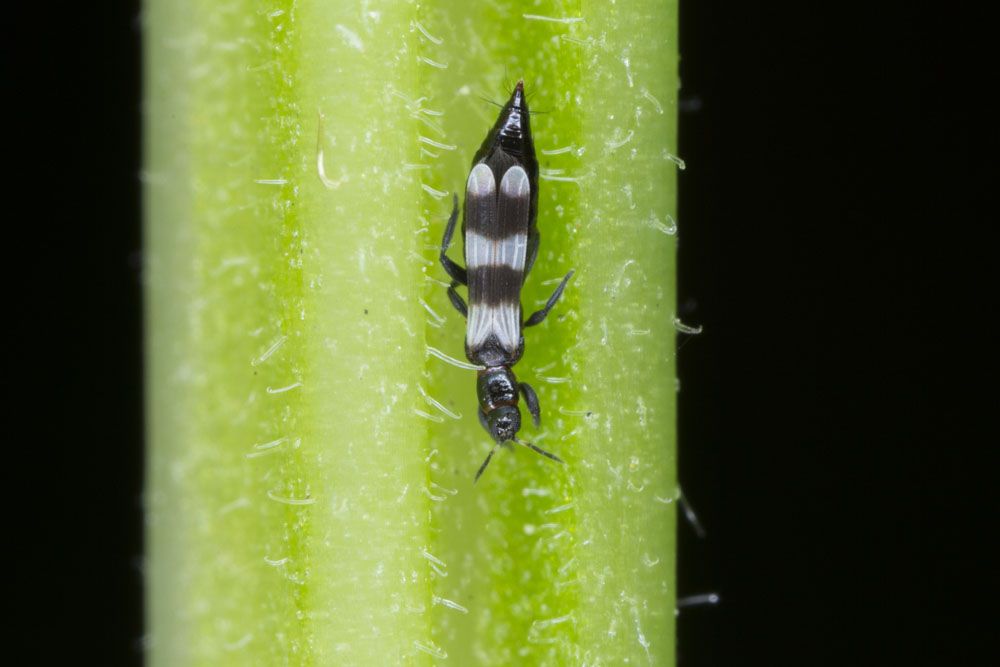
Privet Thrips – Dendrothrips ornatus
Privet Thrips – Dendrothrips ornatus
Common Name: Privet Thrips
Latin Name: Dendrothrips ornatus
Appearance:
Privet thrips are small elongate insects that rasp at leaf cells and feed on the released sap. Infested leaves have a gray dust cast; the lower surface is dotted with dark deposits of excrement. Immature stages are yellow, and adults are dark brown to black with a red band.
Host plant:
Oleaceae, oligophagous
Territory:
Privet Thrips are found throughout Europe
Damages caused by Privet Thrips
Private Thrips damage plants by sucking on the contents of plant cells and have rasping mouthparts. Thrips can harm leaf buds, flower buds, and opened flowers. Flowers that have been damaged show striping in the blooms and a shorter floral life. Damage to foliage that happens during the bud stage is more prominent.
Life history and habits:
Thrips hatch from an egg and pass through two larval stages, prepupa, and pupa, nonfeeding stages, before becoming adults. Although there is no actual pupal stage in thrips, late-instar larvae undergo substantial physical and behavioral changes known as prepupae and pupae. Females of the majority of plant-eating species lay their long, cylindrical to kidney-shaped eggs on or inside leaves, buds, or other locations where larvae feed. Most species’ pale prepupae and pupae fall to the ground or leaf litter, or they settle inside plant galls or cracks. Pupae (and eggs) of several gall-forming species, such as Cuban laurel thrips and myoporum thrips, exist on leaf surfaces but are encased within twisted plant tissue. Thrips have many generations (up to eight) every year. When the temperature is warm, the life cycle from egg to adult might take as little as two weeks.
